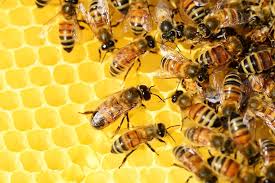The following is a copy of the discussion threads posted to RVMlist over the period March 22-28 in response to an initial posting by Russy and Anita Sumariwalla. Because the same topics were addressed in multiple threads, the listings may not be in strict chronological order, and responses may be separated from the messages they respond to.
Mini-editorial notes:
1. Racism has been worse in the past than it is now. Racism is almost certainly worse somewhere else than it is in the USA. Neither of those facts justify or excuse tolerating our present situation. The tendency to racism, as to war and sexual misbehavior, has been imbedded in our genes by our old friend Evolution. That doesn’t mean we have to accept the outcomes; our genes also produce large brains, with which we like to think we are able to manipulate our societies, governments, and cultures into more user-friendly systems.
2. Re: RVMlist protocols — there are times to whisper assent, and times to stand up and be counted. This was one of the latter. Thanks for chiming in and letting us know where you stand.
Bob Buddemeier
===================================================================
[rvmlist] About Outrage and Solidarity
Yesterday, March 21st – like all March 21st – was universally recognized [and celebrated primarily by Persia-related cultures] as Navroz or Nurooz, first day of Spring, particularly in my former hometown, Mumbai or Bombay, and my Parsi [Zoroastrian] community it is day of celebration of all things good and more good things to come.
Alas! For me and for my wife Anita, we were still mourning and recovering from the terrible shock of the senseless murders of eight persons – human beings — for no fault of their own and for just not looking like an average White American person. We bring this up now for two reasons:
First, we feel compelled to express our pure and unadulterated outrage and second, our solidarity with our fellow Asian origin residents.
Outrage: We believe not to speak out, firmly and unashamedly, amounts to complicity. It is what encourages evildoers and mad persons to continue their heinous crimes. We have limited options under our current circumstances. What can we do and how can we express our outrage. We don’t want to be marked “complicit” in these crimes against humanity. We want to ascertain to the world that this [hate crime against Asians] is unacceptable. And so goes for antisemitism, racism, religionism, fascism and so on. And, with this open letter to RVM residents of all colors and stripes, we plead …. Show us your humanity, tell us that you too are offended, deeply hurt at this current state of affairs.
Solidarity: Our Dear Asian Origin RVM Residents – Since we cannot personally meet with you and convey to you our concern and sorrow, we resort to this forum to reach out to you to express our sympathy and empathy for the social condition you are forced into. Above all we wish to express our solidarity with you [Kumar Bhasin. Grace Chapman, Lydia Deloff, Karen Finley, Nora and Walter Fong, Alysse Furukawa, Sumie and Tom Hasegava-Stoner, Barbara Kim, Naomi and George Kobayashi, Esther and Dan Kochi, Nanci Krovitz, Nanci Lem, Arnold Lam, Amoena and Jim Quan, Teiko Saito, Salome Sato, Janet Scott, Geraldin Shimabukuro, Sachiko Spicknalli, RC Vasavada, Winnfred
Wilson, Kim and YC Wu, and, Mari and Moriaki Zaitsu { Hope we have not excluded any]. We want you to know that we have your back.
Finally, we emphatically stress that this post IS NOT POLITICAL. It has nothing to do with democrats, republicans, socialist, communists, etc. We are speaking as Americans first, under our great constitution, about our state of “humanhood”. No human being should be subjected to what happened a few days ago in Atlanta, Georgia, USA.
Russy and Anita
Russy D. Sumariwalla
>
Sophia Mulder via groups.io
Thank you Russy and Anita, we appreciate your letter very much.
Tom and Sophia
Rita Reitz via groups.io <rreitz88=yahoo.com@groups.io>
Russy and Anita,Thank you for your letter and building awareness and solidarity within our community and in the real world in which we live.
Rita Reitz
Jane Rubey via groups.io
Sun, Mar 21, 11:49 AM (13 days ago)
Reply
Russy,I believe you speak for the silent majority. I know many of us have quietly expressed outrage about the xenophobic treatment of Asian American Pacific Island people’s. Our voices join with yours in outrage and support for our local friends and neighbors.Thanks for speaking out.
Jane Rubey
Mahalo to you, Russy n AnitaI applaud and commend you for speaking up in solidarity against all Asians and people in the minority. Thank you!!
Aloha, Salome
Sandy and I stand in solidarity with all who fear expressions of hate and persecution. The rise of such events as happened in Atlanta most recently brings the sickening realization that in the Information Age, we are still subject to the irrational evil of racism that devastates our American self image of freedom, democracy, and equality for all people. It needs to end. I believe it is the most destructive issue we face as a nation. We are thankful for all our neighbors here at RVM, and we treasure the cultural diversity that lives in our community. We utterly denounce the many horrible acts of homeland terrorism that continue to happen in this country.- Frank and Sandy Roberts
Well said. Gini & I are in complete agreement. And, while the most recent incident in Atlanta was against people of Asian descent, who are certainly long suffering in this country, we like to remind all that people of (some) African descent, as well as those from Latin American countries, are also long suffering – perhaps even more so. And one can’t forget the Sikhs, pacifists as they are, who have suffered much because of their iconic turbans as well as their skin tone.
It’s all just so sad and depressing…..and yes it cries out for a rising up to suppress it all.
Ron Constable
Dear Russy and Anita,
Thank you for your email on discrimination which I appreciate and with which I am in full agreement. It’s hard to believe that there are individuals who harbor so much hate against innocent people, that they would perpetrate murderous acts upon them. Please know that not only do I worry that such behavior threatens us all, but I am interested in hearing the thoughts of all RVM residents of similar mind, and would like to hear your thoughts on how to proceed further.
Thanks and Aloha,Barbara Kim
In this important discussion please don’t forget the ugly persecution of my ancestors, especially my native (Cherokee) great grandmother on my mother’s side and my (very white) Irish great grandmother on my father’s side whose starving parents desperately fled the Ireland potato famine only to face not only more want, but the added burden of national origin-based hatred and exclusion in their new home. It is easy to focus on color or ethnic origin as the reasons for the hatred. And that is indeed clearly a large part of it. Perhaps it might also be useful to concentrate more energy on analyzing as a society exactly who the haters are — their socio-economic status, mental aptitude, mental health, etc., and see if there are more compassionate, pro-active ways we can either isolate them or shut down their behavior. We don’t do a humanitarian, caring job of dealing with those with mental illness in this country, and turning them onto the streets to fend for themselves is clearly an inhumane (and frequently dangerous) solution. And then there are the fringe churches who actively foment hatred and even violence from their pulpits. In a “free” society, how can we counter that hate-filled “freedom of speech?”
Linda Sindt
First, let me say that I agree absolutely that nobody should be discriminated against, much less murdered, because of their skin color or any other characteristics that happen to present them as “different”. After all (as I once expressed to Russy), no one of us is responsible for the skin we were born with, or the culture in which we grew up.Having said that: I don’t think that there exists either here at RVM or in the country at large some sort of racist plague. And, so far as I know, there is no proof that the murders of which Russy speaks were racially motivated. So maybe we should all just chill out a bit. We as a nation have seen quite enough of the attempts to divide us through false accusations of “systemic racism” etc., etc.
Chuck Chase
Chuck,I do not believe that comments as you have written are conducive to the type of conversations that should be occurring on this rvmlist. Yes, maybe they should be discussed, but not here. I disagree with your assessment and am not interested in having rvmlist deteriorate into a debate or an argument.
Mark Edy
Mark,
1) Chuck did not start this conversation.2) His remarks are civil, reasonable, and respectful.3) The topic of the thread is one that should be of interest to all RVM residents.4) Do we really want to significantly constrain what people discuss on rvmlist?
You don’t have to agree with Chuck’s remarks (or with Russy’s remarks … or with the remarks of others who have contributed to the thread) to learn something from reading these remarks. And you don’t have to read them if you don’t want to. Why disallow any of it?
And what about Chuck’s first amendment right (and Russy’s first amendment right … and the first amendment right of every Manor resident) to speak freely? On any topic? At any time?
For what it’s worth, my own view is that we should routinely be calmly and deliberately discussing important national issues on rvmlist (as we are doing in this thread).
With respect to the issue at hand, I would say that, while no society is totally free of racial tensions (because tribal instincts are baked into our DNA by millenniums of tribal culture), America’s polyglot society, which focuses on the individual and on individual merit, irrespective of color, is about as colorblind as can reasonably be constructed. Moreover, in the limited experience of my adult lifetime, I have personally witnessed only two events that smacked of outright racial discrimination, and both of these events took place well over 50 years ago. (One was a refusal to serve blacks in a restaurant somewhere in the deep south, a practice that I suspect was widespread at the time, but I am sure has long since disappeared. The other was the blackballing of a black pledge to my college fraternity at a time when blacks were just starting to attend Ivy League colleges and universities.)
Now you can rightfully question my powers of observation, and I will grant you that one is more likely to take note of such instances if one is a member of a group that is being discriminated against; nonetheless, two instances in over 50 years is hardly a torrent of discrimination. To the extent that this record reflects the history of race relations in America over the past half century, I think it is a record that Americans can be proud of.
I can believe that some of you have occasionally experienced acts of discrimination. We live in a meritocracy, in a society in which individuals compete for money, jobs, recognition, what have you. Picking a winner is an act of discrimination. It is not difficult to know when you have lost such a competition (been discriminated against). What may be difficult is to identify the reason or reasons for this loss. It is very easy to blame the loss on skin color. But often the true reason for this act of discrimination is nonracial.
It is claimed that police apply the law unevenly, depending on the race of those apprehended. OK, this may occasionally be true of some police, but it is not generally true. And police are necessary to keep order and deter crime. It is counterproductive to defund them.
It is also not true that white supremacists are a major problem. White supremacists are simply too few and too far between to be a major cause of racial tensions. Far more troublesome is the Democrat Party’s support of last summer’s riots and what I think is its irresponsible charge of “systemic racism,” endlessly repeated to win votes and further a political agenda, and largely responsible for inflaming and sustaining the tensions it purports to address.
Good to see a reasonable and civil debate on an important national issue here on rvmlist.
Russ Snyder
If we are such a horrible, racist country, why do people still fight and sacrifice even their lives to get here? I must assume that it is better here than where people came from–or they would find a way to go “home.” Very few immigrants come here in fear of the “systemic discrimination” they must have heard about before they came.
As for tribal envy and animosity in any culture, it will be ever thus. America is not a perfect country. We can do better. But dwelling on our lack of perfection is counter-productive. It’s just part of self-imposed “white guilt” to obsess so much about our racial inequities. America is still the land of opportunity, and people who choose to meld into our society still have a very good chance of being better off here than anywhere else.
Janet Bourque
Sadly this song pretty much sums up how many people learn to discriminate against and hate others.Lt. Cable, in the movie South Pacific, sang “You’ve Got to be Carefully Taught”
https://www.youtube.com/watch?v=VPf6ITsjsgkYou’ve got to be taught
To hate and fear,
You’ve got to be taught
From year to year,
It’s got to be drummed
In your dear little ear
You’ve got to be carefully taught.You’ve got to be taught to be afraid
Of people whose eyes are oddly made,
And people whose skin is a diff’rent shade,
You’ve got to be carefully taught.You’ve got to be taught before it’s too late,
Before you are six or seven or eight,
To hate all the people your relatives hate,
You’ve got to be carefully taught!
In 2007 when Jere and I returned to Swaziland (now called Eswatini) for an emergency mission, in order to repair the orphanage primary school demolished by a huge wind storm, I witnessed discrimination even among the Africans. Our team consisted of a black woman from the US. The women of our team were reclaiming bricks from the debris pile. A young local Swazi woman, who had been to the orphanage dairy to purchase milk, saw us working and came to chat with us. She thought that our black team member had come from further up north, like Kenya, because her skin color was darker than hers. She made her prejudice clear by her tone of voice and facial expressions.
In another instance, I had my hair trimmed at a local beauty salon and my operator was half Afrikaner and half South African (Afrikaners are Dutch descendants in southern Africa). He said that when he worked in South Africa, he was too light and when he worked in Swaziland, he was too dark. So he felt that he could never fit in with the natives regardless of where he lived.
“Muzungu”, and its many derivatives throughout Africa, for all intents and purposes means white man, as does “haole” in Hawai’i. In 2020 when Jere and I were in Mbabane, the capital of Swaziland, at a hardware store, we were chatting with a Swazi male clerk. He pointed out that I was a “muzungu”. I put my arm next to Jere’s arm to show him the difference in color, but he still persisted in calling me “muzungu”. I was a “muzungu” merely because I was the wife of a white man. If I was there without Jere, I wonder what he would consider me as being?
Intertribal hatred was best illustrated during our modern times with the Rawandan genocide of the Tutsi by the Hutu. Also there was the 2007-2008 Kenyan crisis with the Kikuyu being slaughtered by the non-ruling minority tribes following the presidential re-election of the former Kikuyu president. We had just served in Kenya in the summer of 2007, so the uprisings that winter filled our hearts with fear for the people we knew, when we saw news broadcasts of the carnage in the streets. Currently the Rohingya muslims are fleeing persecution in Myanmar as well as the Uigur muslims in China. Man’s inhumanity to man…when will it end?
 janet scott
janet scott
LOCAL CARDIOLOGIST SAYS SHE HAS SEEN THE RISE IN ASIAN HATE CRIMES I’m sorry Chuck, I’m just wondering where you get your news. This was on yesterday’s channel 12. It’s happening all over the place. I don’t think we can say that this is simply an isolated incident. We do have to recognize it for what it is and we have to say it’s not OK. It is happening here in our community as it is happening everywhere in the United States. It is not OK and we have to recognize it for what it is.
I know it would be wonderful to assume that we are all without prejudice and that we are all loving people with only positive thoughts but this does exist and it is not OK And this is what Russy was trying to say.
One local Cardiologist says she has been experiencing Asian hate crime during the pandemic.Posted: Mar 21, 2021 2:39 PMUpdated: Mar 22, 2021 9:22 AMPosted By: CNNOre. — A Southern Oregon cardiologist in the Rogue Valley has been recieving racial backlash during the pandemic for being an Asian American.At the start of the pandemic, Jae said a man got into her face and tried to rip her mask off in the middle of a grocery store.”I was confronted by a man who was very upset with me being there, telling me that I brought the China virus in this community and I should get out,” the 43-year-old cardiologist from Oregon said. “He tried to rip the mask off my face. It was very scary and I just had to leave.”He called her a b*tch — but what was worse, Jae said, was that he also called her a racial slur for Chinese people.”I’m not even Chinese. I’m Korean, for God’s sake, you know? My first reaction is to try to make him understand that this is absolutely false,” she said. “My latter thought was this is getting dangerous. I think … I may get physically hurt.”Shaken, Jae went home and told her husband about what happened that day in spring 2020. She never reported the incident and she stopped going to the store at night — she tried not to go out at night at all, except when she was needed at the hospital, she said.In the past year, Jae started to notice that now she avoids crowds too, especially in the wake of the attacks and violence on Asian Americans. Jae said she was hurt and scared by what happened, especially since she’s part of this community. Patients stop her in the streets and people recognize her in her city, which is less than 100,000 people, she said.Jae said she hopes people start seeing Asian Americans as part of the communities where they live.”I think the violence happens because you see these people as the other people, other people who cause harm, other people who done me wrong, other people who brought this virus,” she said. “These are all misinformation where people are considered to be others.”She wishes she would have said something earlier to stand up for other minority groups facing racism.”I wish I spoke up sooner for all violence against minorities, like when the Black Lives Matter movement happened, when there were people, other minorities who were facing just crushing racism and violence,” she said.
Joni Johnson
Well said, Joni. Thank you!-Terri Lambert
Good for you Joni.
For him to say, the Atlanta incident has not been proven to be racially motivated, does not automaticallymean it ‘wasn’t’. All we do know, that 6 Asian’s were killed, he knew going in they were Asian’s. Sountil we know more, let’s not assume it was NOT racially motivated.
There are numerous incidents in various periodicals, TV etc. throughout the country about Asian hate crimes.So for them, it’s not so simple, to just ‘chill out’.
Chuck G
Thank you, Joni.
I think a simple way of pointing out ’the problem’ is to ask: Would you like to change places with that person? Chris Rock, a well known black comedian said during one of his performances attended by essentially all white folks “There isn’t one of you in this audience who would change places with me, and I’m rich!”
Ron Constable
Thank you Barbara. I too would like to hear from the rest of the group how we should proceed to eliminate racism; murder and such. This is a terrible trait of humans.
We all know that the man (his actions are part of the reason I support the death penalty) has said that his motivation was sexism not racism, that the FBI and Sheriff have said the same thing and that two of his victims were White women whose only crime seemingly was that they “didn’t look enough like normal white people” ; see earlier post in this thread).
This was a crime against women; not just Asian women.
I have spend most of my adult life in, and studying, Asia and know without a bit of doubt that Asians hate even more violently than Americans. That’s not an excuse for an American of any color (white is a color) to act violently or hatefully towards “the other”. I just know that the Chinese hate the Japanese (as do the Koreans); the Vietnamese hate the Chinese; the Khmer had the Vietnamese; the Thais hate the Khmer; the Indonesians hate the Chinese; Muslims hate Hindus; Hindus hate Muslims . And all these hatreds are expressed frequently in far more physical violence than anything is US history (possibly the slave trade would be the exception; only “possibly” because the ethnic cleanings in Asia sometimes number in the millions.) Did I mention the Rohinga? Or the Uighurs?
Don’t take any of that to mean that I don’t like Asians. I just know that they, like Americans, are wonderful but flawed beings.
So, when we propose to do something about the real problem before us, we are talking about changing human nature. Pretty tall order.
And the current trend of supporting racist attacks on whites is not the answer. Hate never produces love.
I used to think education was the way ahead, but now it’s our most educated elite (college professors , journalists, etc.) who are among the most rabid proponents of racial segregation, elimination of free speech, and hate sessions in the name of “justice”.
Law? We have numerous laws about such “hate” crimes; apply them fairly without regard to who breaks them.
A first step might be for us all to stop using slogans and jargon to discuss our problems. And to stop automatically assuming that those who disagree with us are either stupid or evil (jumping to that assumption is another human trait). And to stop pretending that America is exceptional in hatred.
Another good step would be to recommit to MLK’s Dream: judging people by their character not their skin.
For all who are in solidarity with the idea that we have created the most violently racist country on earth; you should immediately and very vocally, tell all the POC outside the country to stay home where they are safer and have more opportunity. You owe it to them. Don’t construe that to mean that I am anti-immigration; absolutely not. I just see the feel-good hypocrisy in encouraging the poor and hopeless of other nations to come to a place you are righteously certain endangers them daily.
You can cancel me now.
Butch Finley
A good point Ron, but personally I wouldn’t like to change places with anyone if asked that question.
Bill Silfvast
As one brown-skinned immigrant who has endured many acts of racism, from systemic to personal, from benign to violent over the course of my life, I often find myself thinking and at times uttering racial slurs against others. Shouldn’t the discussion be around examining our own prejudices and finding support from each other to work through them? Isn’t that a way to begin to make the world a better place – right now and with ourselves?
Asifa
Dear Numerous Respondents to my post a couple of days ago on “Outrage and Solidarity”. I am overwhelmed with the unexpectedly large response to my post. I wish I can respond to each and every one of you … some of you took time to relate your own experiences and wrote very eloquently in agreement with my call. Thank you from the bottom of my heart for your solidarity and kindness. It is very comforting in these difficult times.
Thank you and please stay safe.
Russy and Anita
If this angers, so be it. Russy’s expression of Outrage and Solidarity is not an opinion piece – it’s a gift of his deepest beliefs – and one where he took extreme care to depoliticize (IMHO). As with any gift, a simple “thank you” is in order and honest inquiries concerning specific aspects would be as well. But attempts to bend or recontextualize his words into the reader’s “world view” are not only uninvited, they’re also demeaning, invalidating, and rude.The undertone of critics was “Allow me to amend your beliefs so they better represent mine” which, of course, would then be the correct beliefs. The recurrent themes focus upon “relative racism” and “denial of racism”. Few among us would choose to be racist so before going any further, I’ll replace it with the less charged word of “judgmental”.A precept of enlightenment is “we don’t have judgments, they have us”. Our minds are crammed full of associations – some that we’re aware of but probably more that we’re not. If I say “popcorn”, many will reflect immediately upon a favorite movie theater, others the cousin that choked on it, and me – Friday nights watching Ozzie and Harriet. Every one of us is wired differently by our unique intersection of genetics, environment, and experiences.If you’re with me thus far, then the next step is to simply recognize that among the myriad of filed mental judgments (that have us) are ones involving race. Not only is this not wrong, it’s inevitable. We have judgments on everything under the sun – hair color, body shapes, Wednesdays, dust – and the sun, too, for that matter. Thoughts about race, sex, age, and size only move from harmless observation to harmful discrimination – racism, sexism, ageism, size-ism – when they’re codified into personal truths and/or transformed into actions.My invitation yet again to any who’ve persevered is to seek a little introspection. Are you willing to entertain the possibility that your life is shaped more by your reactions than your cognition? If not, that’s fine – but why not just noodle it a bit? Then again maybe you are special – a truly rational human being.As for me, I’ve long contended that human beings are all insane (every one of us holds beliefs that can be empirically disproven) but that’s a given – not the issue. It’s fine that we’re all a little off kilter as long as we’re no danger to ourselves or others.So have I just been guilty of my own accusations – of selling you my world view? Probably. And I’ll gladly go a step further. Thoughtful discussions regarding this post – friendly or otherwise – will be welcomed; personal attacks in any mode will be deleted.
- Please observe Skip’s guideline that copying the full rvmlist should be done sparingly. I’ve done so here because I believe it to be justified. Please relay any feedback on this post individually to me unless you believe it will be of community interest.
Thank you from a know-it-all who knows he doesn’t.
Dennis Q Murphy
THE TRANSFORMATION OF A RACIST
Though my emotional sympathies lie with Russy and those who have wholeheartedly endorsed his original message, I also appreciate the input of Chuck and Russ. My experience differs significantly from many who have written on this topic, and I think it might be worth sharing some of it. I was raised poor though not impoverished in Southern Arizona. African American, Asian Americans and Native Americans (though none of them were designated by those terms) were relatively rare in the general population. Even Hispanics though there were many more were still a numerical minority. I was raised a racist though I didn’t know that word and didn’t know I was one. I was also raised a conservative Christian and all the pictures I saw of Jesus were of a white man. My father eventually became a Conservative Baptist Minister. He welcomed “Negroes” and “Mexicans” in his churches. I don’t remember there ever being and Asian members. I’m sure he remained a steadfast racist regarding “Japs” and “Indians” until he died. The Lone Ranger with his sidekick Tonto was my childhood hero.
I think I first became aware of racism in high school. I was offended by my Spanish teacher’s insistence that Castilian Spanish pronunciation was the only correct use of Spanish. I had chosen to take Spanish so that I could more readily converse with the students whose first language was Spanish, but our teacher was insisting that their pronunciation was incorrect. The public schools in AZ were not segregated but the black students kept to themselves and they lived on the other side of the train tracks. I chose to eat lunch with them. I wasn’t rebuffed by them nor particularly welcomed, but neither they nor I had any doubt that they were considered to be less able academically and not generally welcomed socially. Hispanic students mingled more freely with the predominant white students, but they were far from integrated into the general student body. I formed no close friendships with the black students though I did get to know some of them fairly well. I think it is farcical to say that the non-white students in my high school were now or had been given equal opportunity. Did they take full advantage of the opportunities they had? Almost certainly not, but were they actually able to choose to do so? Again, almost certainly not.
College for me was in a private strongly religiously oriented small school in CA. The total student population was between 300 and 400 and non-white students were rare. In my Freshman class there was one Native American student, Caleb, whose prior education was in a missionary school in Northern AZ. This was the first time I heard someone with whom I had personal contact express outrage at the racism he had personally experienced. Listening to Caleb’s grievances, with the background of my father’s occasional rants about the worthless, lazy Indians was enlightening, but I was still cocooned within the dominantly white society.
I needed to work to pay for my education after high school, and some of the many jobs I had made me aware of discrimination in the workplace. This was no where near the “professional” level of employment. Every Summer I worked in the cantaloupe industry that gets those delicious melons to the rest of the population. There are were no easy jobs. Some have subsequently become easier with mechanization, but in my time in the industry cantaloups were picked and placed into gunny sacks that were carried or dragged to the trailers that transported them to the packing sheds. There is no shade in a cantaloup field. I started work in June in Yuma, AZ. I didn’t ever pick cantaloups. I worked in the packing sheds. Mexicans took those great jobs all day in the sun with the high temperature almost always exceeding 100 degrees F. from those eager Americans who were clamoring [NOT] for them. Once the cantaloups arrived at the packing sheds Mexican Americans (men and women) almost exclusively had the lowest paying jobs throwing out the culls and and sorting into various categories before the melons reached the packing bins. With very few exceptions all the high paying jobs from this point forward in the packing and loading process were held by white men. I was one of those lucky white men. One Summer I ran out of work for a few weeks, and did do some field work harvesting lima beans. I was the only white man on a crew of about 50 men. This was not in an area with 100+ degree highs, but near Oxnard CA near to the Pacific coast, and a lot of the harvesting was mechanized. There was no shade, and I would never choose that as my main employment.
My status as a white male enabled me to pay for education without the burden of student loans. With my Stanford Ph. D. In philosophy, that same status made it easier than it would otherwise have been for me to get employment in a profession dominated by white men. Circumstances resulted in my choosing San Francisco State College (later to become a university). During my years as a professor there our student population came to have no racial majority. The strike by the Black Students Union joined by the American Federation of Teachers union and others produced among other thing what has become the College of Ethnic Studies. Due to my wife at the time, I had become well informed about sexual discrimination against women, but the students now turned my attention to the many ways that ethnic minorities in the USA did not have equal opportunity with the white men that got almost all the high paying jobs in our economy.
My exposure personal and intellectual to the evidence of widespread inequality of opportunity has led me to believe that we are by no means a meritocracy, governed by people selected on the basis of their ability. Ability needs opportunity and in our society that opportunity is in many many instances not present. This isn’t always because of a person’s race, but it often has been and still is. Governing is actually less important than educational and economic opportunity. We have made progress in providing the needed opportunities, and we are unlikely to every achieve EQUAL opportunity to all our citizens, but the unattainability of a goal is not necessarily a good reason to give up the goal. Lesser goals that are attainable are also needed.
We should be proud of the improvements in opportunity for women and ethnic minorities, but we should NOT let those improvements blind us to the needs that still remain. A major reason for the use of the phrase “systemic racism” is to point out that we can be part of a system that generates racial inequality without intending to stifle anyone’s opportunity. We can be part of such a system while intending not to stifle anyone’s opportunity. I fell into that first category for much of my life, and I’m now in the second category. You don’t have to be a racist to be part of such a system. I agree that white supremacists are now relatively rare and not a major part of the problem we face. The more people we can move into the category of intending not to stifle anyone’s opportunity the better our chances of changing the system will be.
Don Provence
Dear Donald:
Under normal circumstances I would have addressed this post directly to you and you only but now my conscience tells me that this is not about politics and this is not a “political” post but something that’s needed to be said for the good of this great nation – greatness of a people/nation resides in the willingness of the people in recognizing where the faults lie and what to do about them. In other words don’t shove them under the rug!
Yes Donald, systemic racism exists in our great nation whether you like it or not. Just as it exits practically in every nation. But that’s not to be used as a “cop out”. Are we proud of our systemic racism? I personally know really wonderful, good, kind, friendly, highly educated RVM residents who in their hearts of hearts believe that there is NO systemic racism in the U.S. Sorry, but I can point to ample empirical evidence to the contrary and you wouldn’t want me to. It is laying in front of your eyes unless you are living in your own cocoon. We must open our eyes to this diagnosis so that we may take small/big steps to ameliorate the problem.
Good nights fellow residents … tomorrow will be a more cheerful Day.
russy
I absolutely and completely agree with you Russy.That was extremely well said ~ I applaud you.Bright minds, who can write long scholarly dissertations, doesn’t necessarily mean their opinions are valid.
Chuck G.

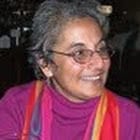
 Foreword This story is about how my wife (Daphne Fautin) thwarted the unlovely aspects of a terminal diagnosis by pre-empting with medical aid in dying, and about how she implemented the process. It’s written in a continuous care retirement facility – Rogue Valley Manor — in which death is ever-present, but rarely addressed other than briefly and euphemistically. That is understandable, but not necessarily conducive to either pre-mortem preparation or post-mortem closure.
Foreword This story is about how my wife (Daphne Fautin) thwarted the unlovely aspects of a terminal diagnosis by pre-empting with medical aid in dying, and about how she implemented the process. It’s written in a continuous care retirement facility – Rogue Valley Manor — in which death is ever-present, but rarely addressed other than briefly and euphemistically. That is understandable, but not necessarily conducive to either pre-mortem preparation or post-mortem closure.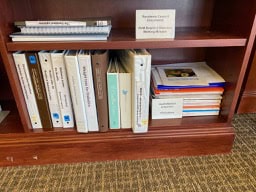

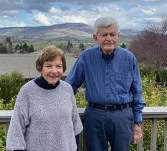

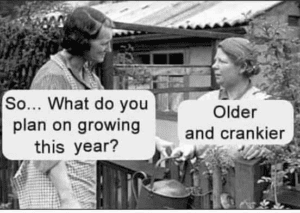
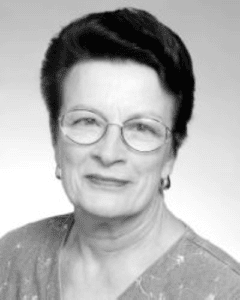
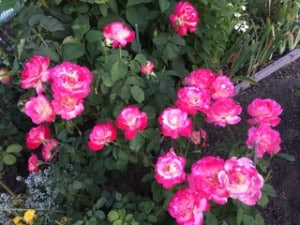 But she hadn’t. So, upon hearing that I had just trimmed the rose bush the afternoon before, she proceeded to hack the big heritage Double Delight Rose down the middle with her axe, then to dig out and take, with the man’s help, one big half of the bush!!
But she hadn’t. So, upon hearing that I had just trimmed the rose bush the afternoon before, she proceeded to hack the big heritage Double Delight Rose down the middle with her axe, then to dig out and take, with the man’s help, one big half of the bush!!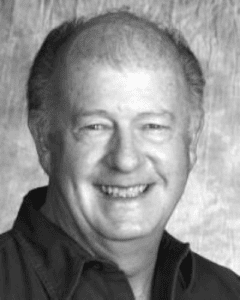
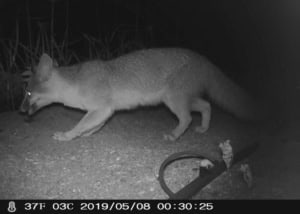
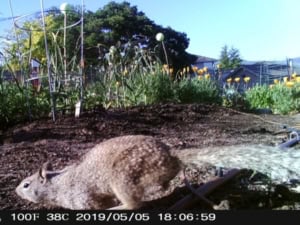
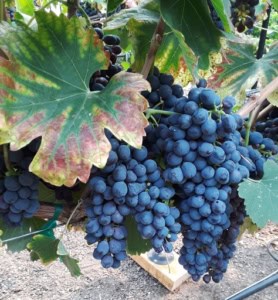
 janet scott
janet scott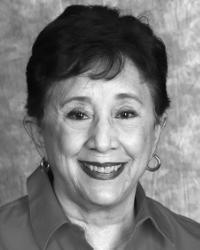 Janet McGary, Chair of the Tutorial Committee
Janet McGary, Chair of the Tutorial Committee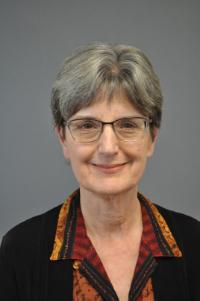 Vicky Gorrell, secretary of the Dining Services Advisory Committee
Vicky Gorrell, secretary of the Dining Services Advisory Committee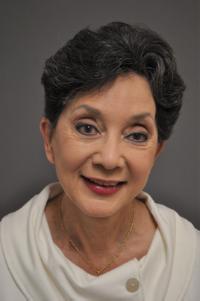 Patty Robb, member, Birthday Lunch Committee
Patty Robb, member, Birthday Lunch Committee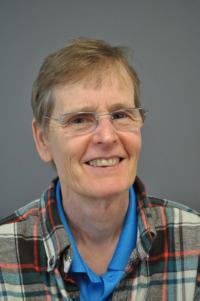 Annabel Ross, Resident Business Office Monitor
Annabel Ross, Resident Business Office Monitor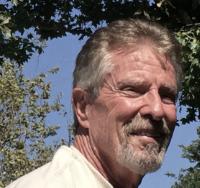 Michael Rugg, Resident Gardens Chair
Michael Rugg, Resident Gardens Chair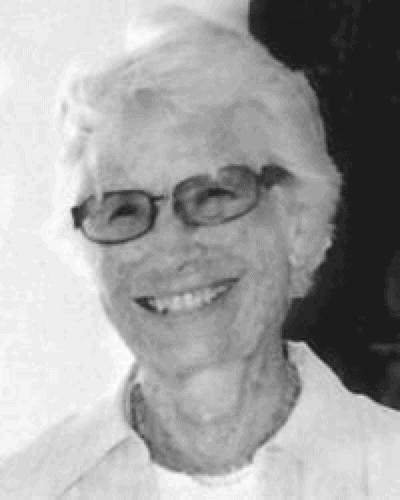 Jordan Mo, Historian
Jordan Mo, Historian